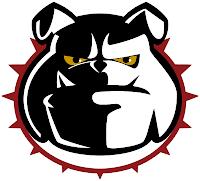More free CCNA and CCENT practice questions...
... plus a HUGE announcement!
I've written another brand-new CCNA and CCENT practice exam for you!
I've created another vital CCNA and CCENT exam tool for you, and this brings you over 150 practice exam questions on the trickiest subject on both of these exams!
My world-famous binary math and subnetting methods have helped certification candidates around the world just like you earn their CCENT and CCNA...
... and you also get over 150 practice exams questions available nowhere else, all with fully-illustrated answers.
This includes a tough Final Exam!
This ebook will make you so much faster at resolving these questions on exam day that it's like buying an extra 30 minutes of time on the exam!
To thank all of you for making TBA the success that it is, I'm releasing this new ebook at HALF of the usual price...
... right now, on Amazon, it's yours for just $4.99, and you can download it in just seconds!
It's just like buying extra time on your CCENT and CCNA exams!
You don't need a Kindle to read it -- just use the Kindle App you likely already have on your smartphone, PC, or MAC, or just download a free reader here!
(I personally love the Cloud Reader!)
Free Amazon Ebook Reader Apps
Grab your copy today, and right now, let's get to today's practice exam!
1. Name the protocol or service described in each line.
A. Makes it much more difficult to read passwords in the Cisco router configuration (as opposed to the default)
B. Delivers information about directly connected Cisco devices
C. Performs dynamic assignment of IP addresses
D. Shows the L3 path from your local router to the remote host, including IP addresses of all intermediate routers

2. Which of the following most accurately describes the number of ACLs you can apply to a single Cisco router interface?
A. As many as you like, and as you apply multiple ACLs in one direction, the contents of the most recently applied ACL will be added to the bottom of the ACL that is already applied.
B. One ACL per direction AND per protocol
C. One ACL per direction
D. One per protocol, and as many as you like in one direction.

3. If a Cisco switch port is running "CSMA/CD", what else can we definitely determine about that port?
A. It's the logical interface representing VLAN1 on the switch (the default admin VLAN).
B. It's running at full-duplex.
C. It's running at maximum speed.
D. The port is running at half-duplex.

4. A Cisco switch is "administratively down". What should you do to resolve this issue?
A. Reopen the VLAN 1 interface (the administrative interface).
B. Manually re-open the port in question.
C. Make sure the port is getting clockrate from a DCE
D. Check the cabling, because one of them is loose!
5. What command gave us this output?
R1#
Serial0 (down): ip 172.12.123.2 dlci 122(0x7A,0x1CA0), static,
broadcast,
CISCO, status deleted
Serial0 (down): ip 172.12.123.3 dlci 123(0x7B,0x1CB0), static,
broadcast,
CISCO, status deleted

Answer and explanations right after this brief, important message!
My all-new CCNA 200-120 Video Boot Camp is ready to help you earn your CCNA -- without busting your budget!
You get immediate access to my 27-hour course for just $44!
Over 35,000 students are now in my Video Boot Camps, and it's time for you to join us -- and get certified!
Join us right now by clicking this banner!
And now... the answers!
1. In order...
A. service password-encryption encrypts the passwords in your config that aren't encrypted by default. (And only one is!)
B. Cisco Discovery Protocol (CDP) gives you info about directly connected Cisco devices.
C. DHCP, the Dynamic Host Configuration Protocol, is used to dynamically assign IP addresses to hosts.
D. Traceroute will show you the IP address of every router between you and the router you're "tracerouting" (the remote router).
2. "B". The ACL limit is one per direction per protocol.
3. "D". If a switch port is running CSMA/CD, we know by the operation of that service that the port is running at half-duplex.
4. "B". "administratively down" just means you need to manually open that particular port.
5. That's the output of show frame map. And from the looks of things, we need to do some troubleshooting there, and that's a subject for another day!
Be sure to grab your copy of this important ebook and save yourself some serious time on exam day, and I'll see you Tuesday with another practice exam!
Chris B.


Comments